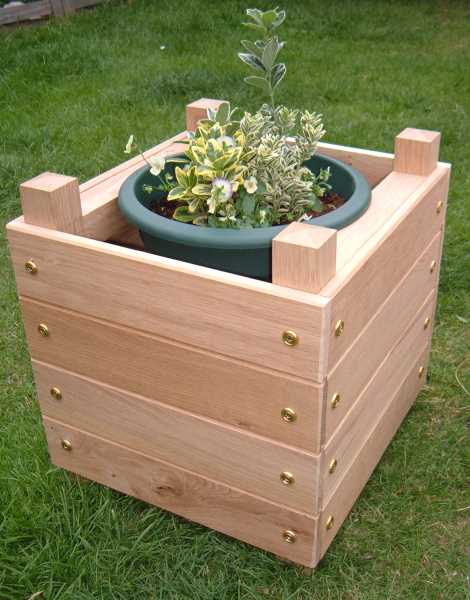This is a simple guide for making a fun wooden planter. It’s a basic project, but the end result is something to be proud of. Even if you’re not making this for your own plants, it would make for a nice gift for somebody.
There are no complex woodworking joints in this guide! I’m using European oak for my planter as I’ve had offcuts lying around my wooden garage doors workshop – you can use whatever timber you wish.
You should be able to source the timber from a local saw mill or timber merchants, as the majority carry a stock of tongue and groove boarding in both hardwood and softwood versions; you may struggle to find oak, however, pre-machined.
The sizes listed are required sizes, so if shopping for timber, remember to allow a bit extra for waste.
Quick tip: if you can lay your hands on some hardwood, then your new planter will last longer!
Cutting List
- Vertical Uprights (Known as Uprights from here on in) = 4 at 430mm x 45mm x 45mm
- Horizontal rails (Known as Rails from here on in) = 4 at 290mm x 45mm x 45mm
- Tongue and groove boarding to clad = 16 at 382mm long
(the boarding I’m using is 95mm overall wide, thickness is to an extent unimportant, my boarding is 16mm thick) - Tongue & groove boarding (inner base) = 2 at 350mm
























